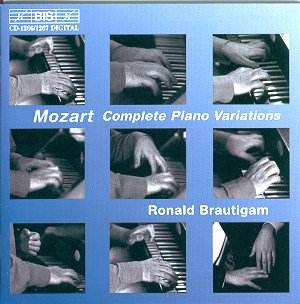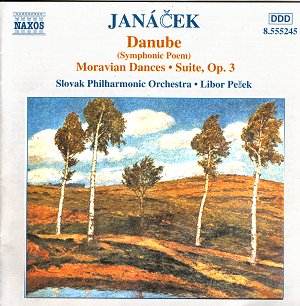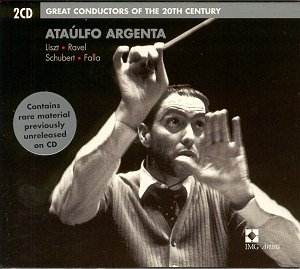 Composer: Wolfgang Amadeus Mozart
Composer: Wolfgang Amadeus Mozart
Works: Complete Piano Variations: Kk. 24, 25, Anh. 138a/547a, 179, 180, 264, 265, 352, 353, 354, 398, 455, 460, 500, 573, 613, Adagio in B minor K. 540, Fantasia in D minor K. 397, Gigue K. 574, Klavierstück K. 33B, Marche funebre del Sig. Maestro Contrapunto K. 453a, Modulating Prelude K.VI (missing), Overture (Suite) K. 399, Prelude (Capriccio) K. 284a/395, Prelude and Fugue in C K. 394, Rondos: Kk. 485, 511
Performers: Ronald Brautigam (fortepiano)
Recording: Recorded at Länna Church, Sweden, August 1997
Label: BIS
Mozart’s piano variations reveal a nuanced understanding of both form and emotional expressiveness, showcasing the composer’s ability to transform simple thematic material into intricate explorations of character and mood. This complete set of variations, artfully rendered by Ronald Brautigam on a fortepiano modeled after Anton Gabriel Walter’s instrument, provides a window into the composer’s inventive spirit during the late 18th century, an era marked by burgeoning Romanticism and increasing complexity in musical thought.
Brautigam’s interpretations exhibit a commendable blend of technical brilliance and stylistic fidelity. The fortepiano, with its unique tonal palette, breathes new life into these variations, imbuing each piece with a distinct character. The instrument’s rich harmonics and the resonance of the church setting elevate the performances, allowing for an exquisite clarity that is often elusive in modern piano recordings. The interplay of brightness and warmth in the upper registers contrasts beautifully with the percussive quality of the lower notes, particularly evident in pieces such as the D minor Fantasia (K. 397), where the rapid scales in the presto sections demonstrate both the instrument’s capabilities and Brautigam’s deft touch. His playing here is marked by an evenness that allows the intricate textures to emerge with a splendid clarity.
However, while the majority of the recording embraces the virtuosic demands of Mozart’s writing, there are instances where Brautigam’s approach could benefit from a lighter touch. In the more delicate passages, such as the final section of the D minor Fantasia and the D major Rondo, a certain rigidity in his tone detracts from the music’s inherent grace. This is also apparent in K. 455, where a somewhat perfunctory interpretation lacks the nuanced phrasing that characterizes Mozart’s more lyrical moments. The fortepiano’s advantage in producing fluid, unclumped chords is occasionally undermined by a heavy-handed approach, particularly in the A minor Rondo, where the melody becomes obscured by an overbearing accompaniment.
The engineering of the recording deserves special mention; the sound quality is superb, capturing the fortepiano’s sonorous qualities in a way that many modern pianos cannot replicate. The recording engineers have successfully highlighted the instrument’s unique tonal characteristics, allowing for an immersive listening experience. The church environment contributes to a natural reverberation that enhances the overall sound, particularly in the more expansive works included in this collection.
Brautigam’s prior recordings of Mozart’s complete sonatas have established him as a noteworthy interpreter of the composer’s keyboard works. This recording of the complete variations further solidifies his reputation, though it also raises questions about the completeness of his oeuvre thus far. While this set is comprehensive in its own right, the absence of a handful of minor pieces is felt, particularly considering the four-disc format. A full completion of Mozart’s piano works would be an admirable endeavor for Brautigam to undertake, as it could potentially unveil new layers of interpretation and emotional depth in these beloved compositions.
Ronald Brautigam’s performance of Mozart’s complete piano variations is characterized by a vibrant interplay of technical prowess and stylistic authenticity. While some interpretive choices may lean towards a heavier hand, the overall execution is compelling and engaging. The fortepiano, paired with the acoustics of Länna Church, creates a rich auditory tapestry that captures the essence of Mozart’s genius. This recording stands as a significant contribution to the canon of Mozart interpretations and invites listeners to revel in the delightful complexity of his variations.



